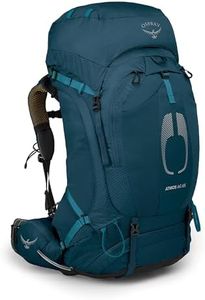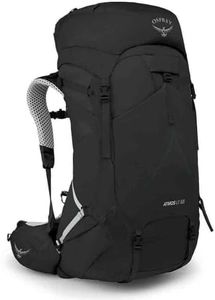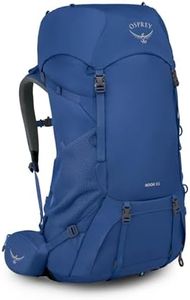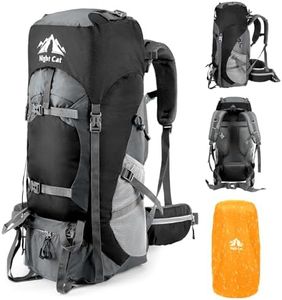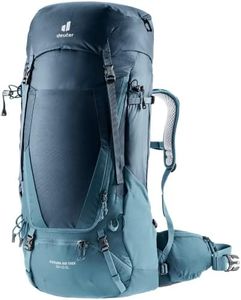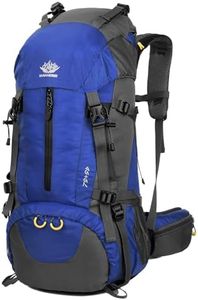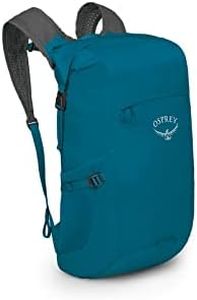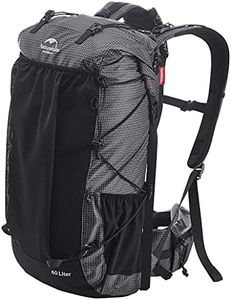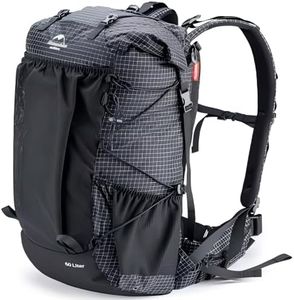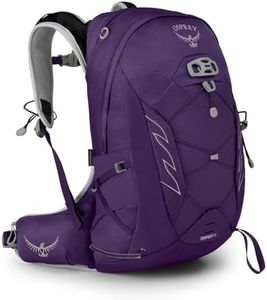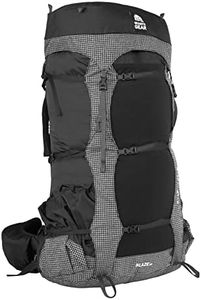We Use CookiesWe use cookies to enhance the security, performance,
functionality and for analytical and promotional activities. By continuing to browse this site you
are agreeing to our privacy policy
10 Best Backpacking Packs
From leading brands and best sellers available on the web.Buying Guide for the Best Backpacking Packs
Picking a backpacking pack is a crucial step for any outdoor adventure. The right pack will carry all your gear comfortably, distributing the load so you can hike for miles without pain or strain. When choosing a backpacking pack, you should focus on how it fits your body, the amount of gear you plan to carry, and the types of trips you’ll be taking. Understanding the key specs will help you narrow down your options and find the best match for your needs.Capacity (Volume)Capacity measures the amount of gear a pack can hold, usually given in liters. This spec is important because it determines how much you can carry, from weekend loads to supplies for a weeklong trek. Packs can be grouped into small (up to 40 liters), medium (40-60 liters), and large (60+ liters). Smaller packs are great for overnight or ultralight trips, while medium ones suit most 2-4 day adventures. Large packs are best for longer journeys or carrying bulky gear. Picking the right capacity depends on how long your trips are and how much you need to bring—you want enough room, but not so much that you're tempted to overpack and carry extra weight.
Fit (Torso Length and Hip Belt Size)Fit is about how the backpack matches your body’s measurements, especially your torso length and hip size. Good fit is crucial for comfort and preventing injuries, as most of the weight should rest on your hips. Pack sizes usually range from small to large, and some let you adjust the torso or swap the hip belt. To pick the right one, measure your torso (from your neck’s base to the top of your hips) and hips, then match these to pack sizing charts. Try the pack on if possible to ensure it hugs your shoulders and hip belt sits comfortably on your hip bones.
WeightPack weight refers to the empty weight of the backpack. This matters because heavy packs add to your load before you even start packing gear. Packs range from ultralight models (usually under 2 pounds) to traditional, sturdier packs (which can weigh 4 pounds or more). If you prioritize minimalist travel, ultralight options help keep your overall weight down, but they might sacrifice padding or durability. Heavier packs are better for carrying larger loads or accommodating rougher use. Consider your packing style and comfort preferences—lighter is generally better, but make sure the pack has enough support for your trip.
Frame TypeFrame type describes the internal or external structure that helps the pack hold shape and transfer weight. Most modern packs use internal frames, which are hidden inside the pack and provide a snug, stable fit for uneven trails. External frame packs are less common but are useful for heavy, uneven loads and offer more ventilation. Frameless packs are the lightest but best for very light loads. When choosing, think about the type of terrain and load you expect—internal frames suit most users, while external or frameless packs cater to specific needs.
Access PointsAccess points mean the ways you can get to your gear inside the pack, such as top-loading, front-panel, or side zipper entries. Top-loaders are simple and common, but sometimes it’s hard to reach gear at the bottom. Packs with extra zippers or front panels let you open them up more like a suitcase. Pick based on how much you tend to organize or dig for gear—if you like quick access, a pack with more entry points helps, but for simplicity and reliability, top-loaders work well.
Suspension and PaddingSuspension and padding refer to the systems (shoulder straps, hip belt, back panel) that cushion the load and manage weight distribution. This is key for comfort on long hikes. Packs can have minimal padding for light loads or extra cushioning and mesh panels for heavier loads and better airflow. Try different packs if you can—if you plan to hike long distances or carry more weight, look for sturdy suspension and thick, comfortable padding.
Pockets, Compartments, and AttachmentsThis spec includes all extra storage options like exterior pockets, hydration sleeves, gear loops, and straps. These help keep your gear organized and accessible. Some packs are streamlined, while others offer multiple pockets, daisy chains, and lash points. More pockets are convenient for organization but can add weight and complexity. Choose what fits your packing habits: if you like things organized and easy to grab, pick a pack with more pockets; if you prefer simplicity, go for a cleaner design.
